
Orientation and Wayfinding Landmarks for Dementia:
Windows Out, Outdoor Murals and Splashbacks
Here is your easy 3-step formula for orientation and wayfinding landmarks for dementia room door wayfinding.
Firstly, encourage your residents to bring 7 (seven) personal, highly visible items to decorate their rooms. It is important that the elder chooses the items themself – not a family member due to a time warp. Your resident will then recognize their room through their items. NOTE: Store excess items elsewhere for them. People will collect items from throughout a facility if they feel a sense of scarcity in their room.
Secondly, people will remember their room’s location using a ”Room Door Wayfinding” product. Either a True Doors® decal or one of our Stained Glass Goor Panel Inserts. As Interior Decorators, we prefer to design your wayfinding landmarks for you according to your home’s style and demographic. We find this creates more cohesive and, therefore, sustainable wayfinding measures.
Thirdly, people will navigate to their rooms via landmarks – like art. Thus, landmarks are incredibly vital for wayfinding navigation in any care home or hospital. Bad landmarking and the lack of effective door disguises causes the majority of residents to stress. ”Art creates culture, Culture creates community. Community creates humanity.” Susan Magsamen, International Arts + Mind Lab, Johns Hopkins University School of Medicine.
Art is the answer the Aged Care Industry needs to create community and well-being.

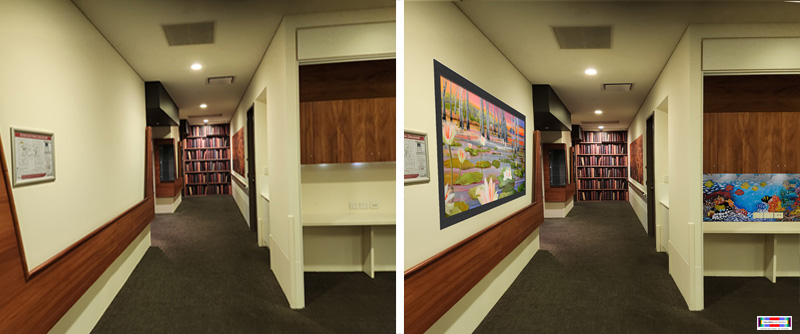
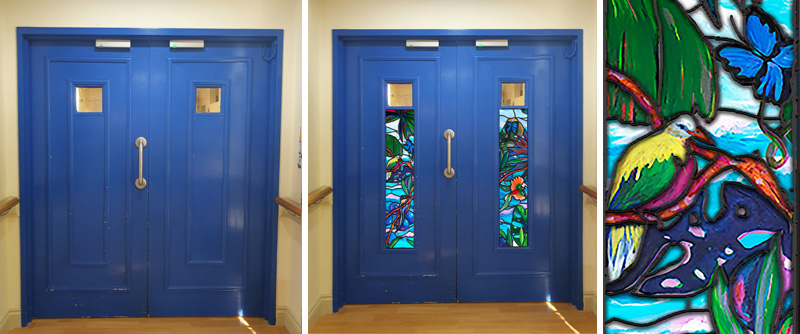
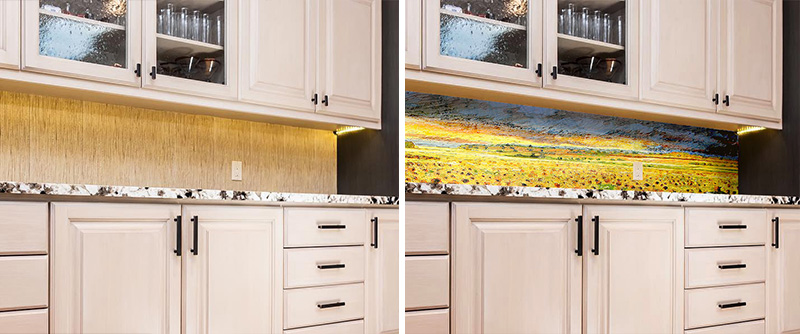
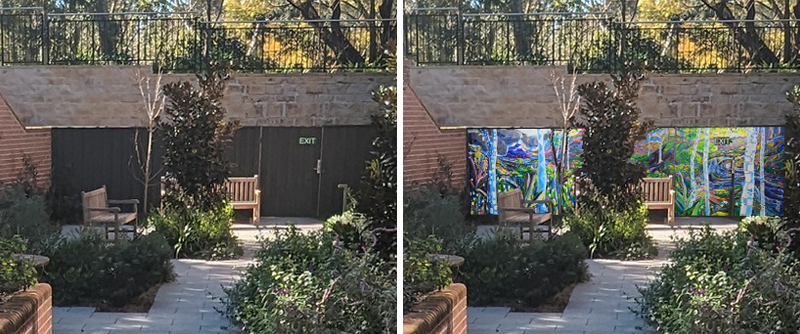
Windows Out
Artwork Wayfinding Landmarks for dementia activity
Picture Your Nursing Home with a Stable and Supportive Environment using Salient Cues for Wayfinding in Dementia
Beautiful Custom-made Artworks enhanced for easier Orientation
The Picture Your Nursing Home: Exploring the Sense of Home of Older Residents through Photography Study concluded that ”features of the built environment that matter are the green environment, the view from the rooms, and having personal belongings in a private room where residents can withdraw. When these important features of a nursing home are present, residents have a basis to develop a sense of home.” It is impractical and inefficient on staff time and nursing expertise to expect them to decorate the interior of a care home with residents’ art, furniture, and objects, constantly changing it as residents pass away.
In the Review Study Creating a Supportive Environment using Cues for Wayfinding in Dementia, evidence proved our theories from 4 environments:
1) simple salient, which had four pictures of black and white objects as cues;
2) complex salient, which had colorful and textured cues, such as a cobblestone wall, and colorful pictures;
3) nonsalient, which had two black and white abstract pictures, and
4) a control condition, which was similar to the simple salient condition except the cues changed locations among trials.
Results of the study showed effects of age and cue condition, with the
– Younger subjects faster and more accurate at finding their way
– All subjects found the hidden target the best in the complex salient cue condition
– The older adults had a much worse learning curve in the non-salient cue condition when compared to the younger adults
This study supported the proposition that older women may be more reliant on colourful and numerous cues than younger women.
Most care homes for dementia are decorated with small commercial framed prints behind glass that bring confusing glare and reflections for people with Alzheimers Dementia, Lewy Bodies Dementia, and other dementias. Glass framed prints have higher cleaning needs and safety issues due to their breakability and bland lack of impact – not because of their graphic’s image, but side profile. The deep edges of frames and canvas prints are hard to see from an angle – especially from the top of a hallway, rendering them useless for landmarking. Photographic canvases and super graphics can look and feel clinical, making people feel like they are in an institution – or hotel. In fact, we have heard from some facility managers that their residents have used canvases as weapons.
If one is in a hotel without any money, one cannot buy food. This is one reason why people living with dementia refuse to eat and lose weight. Add to this, photos on canvas, for instance, of a typewriter or bird on a branch, look school-like and never home-like.
From 16 years of painting private art commissions and decorating spaces, we can tell you that people only hang art in their homes or family photos. In this way, our Windows Out and the many other wayfinding landmarks for dementia below create more visible and beautiful art solutions. Beauty creates wonder which creates curiosity. If an artwork is meaningful and well-placed a person will remember it. So instead of hanging an artwork that is only meaningful to one person out of 50 to 180 in your care home, hang artworks that will be salient for the greater community, and, create stability, and save costs.
Windows Out bring Views. From our hundreds of art commissions, we give you international themes everyone relates to – water, nature, light, love and travel. Windows Out will soon come with Mahogany Frames as an option to neutral grey. In ad to this, as an option to wallpaper art and aluminium art, we are creating a moveable gallery hanging system for person-centred care. Contact us to design and quote your art gallery for dementia.
Discover Windows Out – the best wayfinding landmarks for dementia

Outdoor Murals
Converts hospital walls into outdoor galleries.
Creates conversations to reduce elopement.
In Aged Care there is a term called ‘racetracks’. Meaning, the path that takes people on a never-ending circuit around a garden or the building. As a person’s vision lessens to monochromatic, they navigate through tone and shape. Outdoors their perception of the environment is affected by glare and shadow. Add to this, non-descript walls and gardens. So, without outdoor art landmarks for dementia, a person can easily become disorientated, and tired and experience a fall. The best practice environmental design for dementia is to provide seating at least every 25 meters. Herein lies the solution — Landmark cues of Outdoor Murals with a seat to relax and reminisce on art.
Art reminiscence brings culture and memories back to a person. Our Outdoor Murals are delivered ready to hang on ACP (Aluminum Composite Panel). Our largest size in one panel is 3 meters x 1.5 meters and they can be seamlessly joined together to conceal ugly fences and walls. Book a Free Discovery Call to learn more.
Discover Outdoor Art for dementia wayfinding landmarks

Splashback Murals
Supports architectural style and cultural art reminiscence.
Dementia wayfinding landmarks for the Heart of the Home.
Create architecturally relevant themes and atmospheric landmarks for wayfinding with splashback murals. In older times, art was used for backsplashes, especially in tile. In dementia landmark design for better wayfinding, we look for verticle spaces where colour and style were traditionally placed. Form follows function and so, splashback murals are a practical design feature for the home.
We can do tile, toughened glass or film splashback murals for kitchens in a small home model or to warm your commercial kitchen in your Aged Care Residence. Book a Free Discovery Call to learn more.
Discover kitchen and laundry wayfinding landmarks
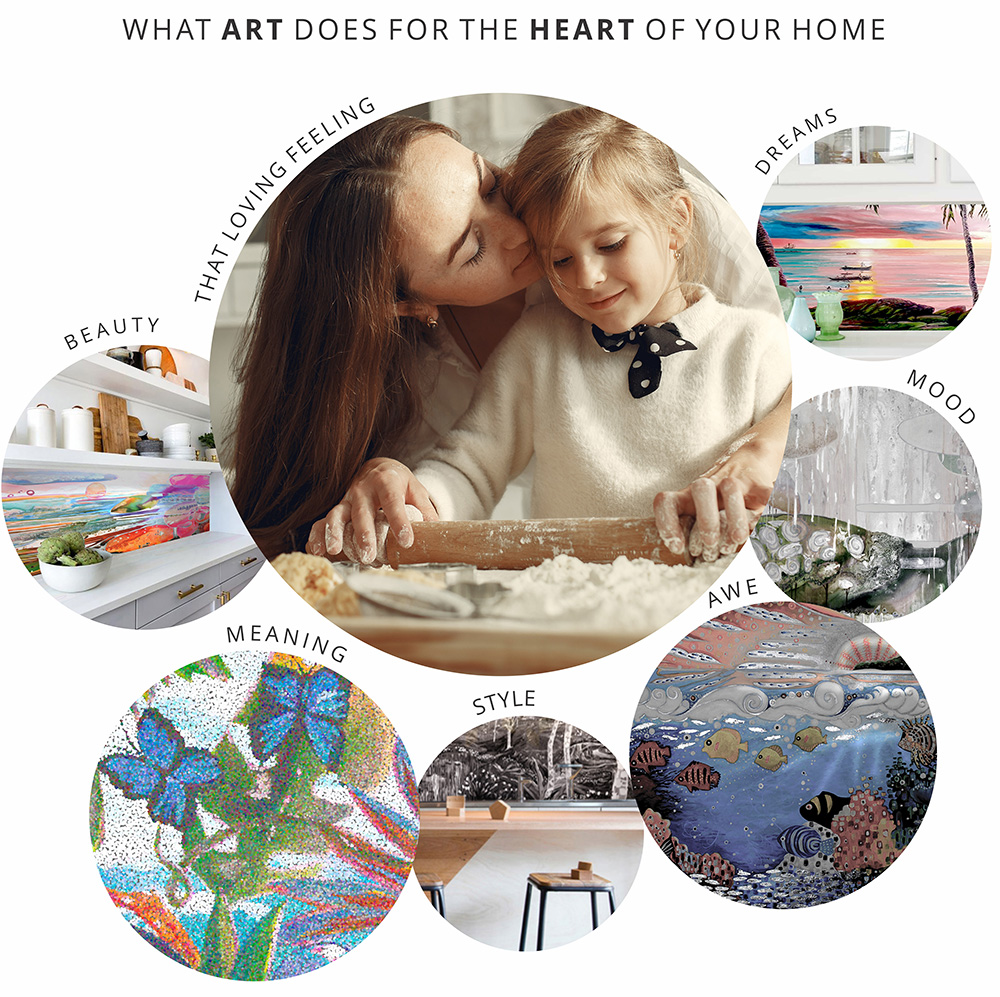
Contact us now to receive our full catalogue of dementia-friendly products!
